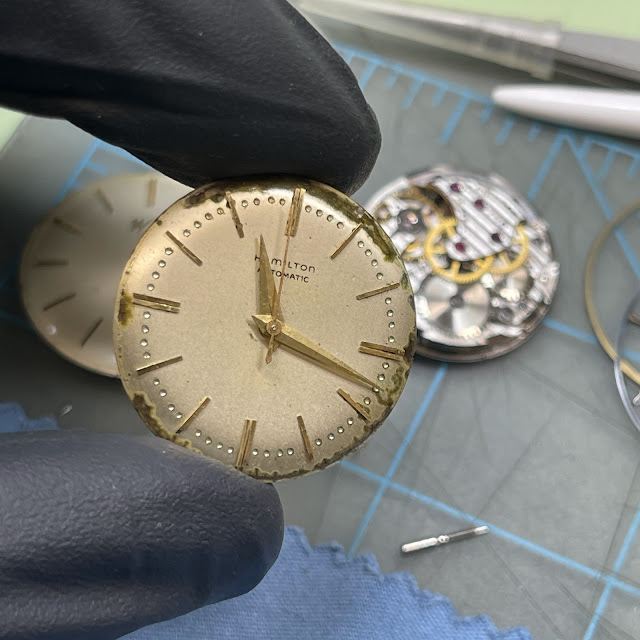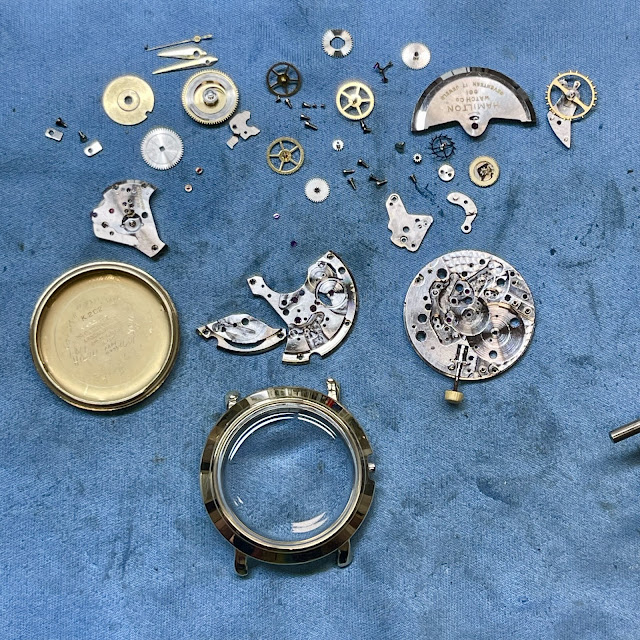It's been a while since I've covered a new model for the blog. I've done over 800 different models and there are only 1100 or so to be covered - surely I've done all the more common, easier to find models by now. Apparently that's not entirely the case though - not yet anyway.
Today's watch is a 1970s model called the Sea Breeze III. It was introduced in 1972 and produced through 1977 - so that's a pretty good run. In 1972 it was advertised at $45 on a strap or $49.95 on a bracelet. It's a stem wound model - not an automatic.
By 1977 the price increased considerably.
Interestingly, in 1972 a very similar model called the Sea Beach IV was also produced. It looks identical to the Sea Breeze III, at least in black & white.
In 1975 it appears to have been renamed the Sea Breeze III as well - just cased in stainless steel instead of gold electroplate. More about that in a bit.
The Sea Breeze III goes by the model number 688015-4. The -4 represents gold electroplate. I would wager that the stainless steel version and the Sea Beach IV go by the model number 688-015-3, -1 representing stainless steel.
My project watch is in very good shape, for the most part. Being a 688XXX model, I'm going to guess this has a 688 movement inside.
The crystal has a crack inside it that you can see from an angle but not directly straight on. So I'll have to replace the crystal.
The Sea Breeze is a large watch by vintage standards. It's probably 36mm side to side.
It took some doing but I finally got the case back off. The gasket has degraded and part of it has come off with the back.
This is interesting... this watch has a 685 movement inside. This is a pretty rare caliber and used in some military watch models. It looks a lot like a 688 and one of the major differences is the 685 hacks, or stops, when you set the time. I will definitely have to replace the gasket in the case.
The dial is held in place with dial foot screws on the perimeter of the mainplate.
From the front, you can easily tell the 685 is an ETA caliber - it looks like every other ETA caliber in Hamilton's line up.
The 685 hack mechanism is a little more complicated than in later movements like the 649. When the stem is pulled out the mechanism moves and bumps into the balance wheel - stopping the watch. When the stem is pushed back in, the lever moves away from the balance and the watch starts again.
Everything is disassembled and thoroughly cleaned. While the parts where in the cleaner I replaced the crystal in the bezel.
The reassembled movement is bright and shiny and ticking away with a nice motion.
The timing is right on the money. The amplitude is a smidgen low but I haven't fully wound the movement yet.
The dial and hands go back on and then the assembly goes back into the case. I'll need to order a replacement gasket, this case is much larger than my stash will provide.
The finished watch looks great with a new crystal and it's now running as well as it looks. I'm not a huge fan of the 1970s styling but this is a large enough watch that it actually has some appeal.




























































